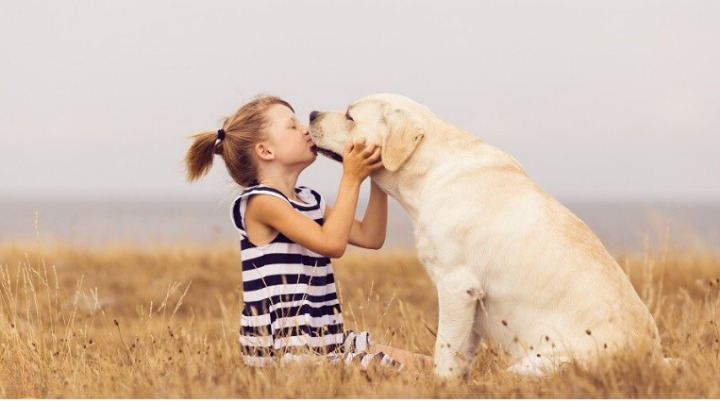In the vast realm of human-animal interactions, dogs have long captivated our hearts and minds with their unwavering loyalty and affection. They have become cherished companions, sources of comfort, and even protectors in times of need.
Yet, amidst the countless ways they communicate their emotions to us, one question persists: Do dogs cry? This inquiry delves into understanding the complex emotional landscape experienced by our canine counterparts. While tears are often associated with sadness or distress in humans, it is crucial to approach this topic objectively and without anthropomorphizing our furry friends.

By exploring the intricate anatomy of a dog’s tear ducts and deciphering how they express their feelings through various cues, we can gain valuable insight into their emotional world.
In this article, we will delve into the fascinating realm of dog emotions – shedding light on whether dogs can truly shed tears and examining potential reasons for such behavior. Moreover, we will explore ways to comfort and support emotionally distressed dogs while strengthening the bond between humans and these remarkable beings.
Through knowledge and empathy, we can better serve our loyal companions in navigating the complexities of their emotional lives.
Do Dogs Cry Key Takeaways
- Excessive tearing in dogs can indicate health issues or eye irritations.
- Dog tears serve as emotional signals and contain stress hormones.
- Dogs use facial expressions and body language to communicate emotions.
- Understanding and responding to dog emotions is crucial for a harmonious relationship.
Understanding Dog Emotions
The study of dog emotions is a complex and fascinating field that seeks to understand the intricacies of how dogs experience and express their feelings. One aspect that researchers focus on is dog body language, which plays a crucial role in canine communication. Dogs use various physical cues to convey their emotions, such as wagging tails, flattened ears, or raised hackles.

For example, a wagging tail often signifies happiness or excitement, while flattened ears can indicate fear or submission. Understanding these subtle signals can help pet owners interpret their dog’s emotional state and respond accordingly.
Canine communication goes beyond just body language; vocalizations also play a significant role in expressing emotions. By studying and deciphering these nonverbal cues, researchers can gain insight into the complex emotional lives of dogs and enhance our understanding of this unique species.
Can Dogs Shed Tears?
Tears are produced by dogs as a response to certain emotions, such as pain or sadness, and studies have shown that on average, a dog produces approximately 10 to 20 tears per day.
While dogs do produce tears, it is important to note that their tear ducts function differently from humans. Here are three interesting facts about dog tears:
- Dogs’ tear ducts are not designed for emotional crying like humans. Instead, they primarily serve the purpose of lubricating and protecting the eyes.
- Excessive tearing in dogs can be indicative of underlying health issues or eye irritations that require veterinary attention.
- Emotional well-being in dogs is crucial for overall health and happiness. It is important for dog owners to provide a supportive and loving environment to prevent stress or anxiety that could potentially lead to excessive tearing.
Understanding dog tears and prioritizing their emotional well-being can contribute significantly to their overall health and quality of life.
The Anatomy of a Dog’s Tear Ducts
Dogs’ tear ducts are a vital part of their ocular anatomy, responsible for maintaining the lubrication and protection of their eyes.
The lacrimal glands situated above the eyes produce tears that flow through small canals, known as tear ducts or nasolacrimal ducts, into the nasal cavity.
When dogs blink or close their eyelids, these ducts facilitate the drainage of tears away from the eyes.

Tear production in dogs is influenced by various factors, including emotional states such as pain or distress, as well as environmental factors like wind or dust particles irritating the eye surface.
These tear stimulating factors activate nerve signals that trigger the lacrimal glands to produce more tears, ensuring that dog’s eyes remain moist and protected.
Understanding the anatomy and function of a dog’s tear ducts is crucial for providing appropriate care and addressing any potential issues related to their ocular health.
How Dogs Express their Feelings
Canines communicate their emotions through a variety of non-verbal cues, such as body language and vocalizations. Understanding dog body language is crucial for effective communication with dogs.
Dogs use their bodies to express a range of emotions, including fear, happiness, and aggression. For example, a wagging tail usually indicates excitement or friendliness, while a tucked tail suggests fear or submission.

Additionally, dogs use their facial expressions to convey information about their emotional state. Raised eyebrows can indicate curiosity or confusion, while narrowed eyes may signal aggression or threat.
It is essential for individuals interacting with dogs to be attentive to these cues in order to interpret the dog’s feelings accurately and respond appropriately. By understanding and respecting dog body language, we can establish better connections with our canine companions and ensure their well-being.
Emotional Cues in Dogs
This paragraph will discuss the emotional cues exhibited by dogs, specifically focusing on signs of happiness and joy as well as indicators of sadness or distress.
Dogs display various non-verbal cues to convey their emotions. Signs of happiness and joy may include a wagging tail, relaxed body posture, and a cheerful demeanor, while indicators of sadness or distress can manifest in behaviors like whimpering, avoiding eye contact, or withdrawing from social interactions.
Signs of Happiness and Joy
Evident through their wagging tails, bright eyes, and playful demeanor, signs of happiness and joy in dogs can bring a sense of warmth and delight to the observer. Dogs use their body language as a form of communication to express their emotions.

When dogs are happy and joyful, they often exhibit the following behaviors:
- Tail wagging: A wagging tail is a classic sign of happiness in dogs. It shows that they are excited and content.
- Bright eyes: Dogs with bright, alert eyes indicate a positive emotional state. Their eyes may appear wide open with a relaxed expression.
- Playfulness: Happy dogs engage in play behavior such as jumping, chasing, or fetching. They may also initiate play with other animals or humans.
- Relaxed posture: A dog that is happy will have an overall relaxed body posture. Their muscles will be loose, and they may lie down on their back or side.
Recognizing these signs of happiness in dogs allows us to understand their emotional needs better and provide them with the care they deserve.
Indicators of Sadness or Distress
Distinct signs of sadness or distress in dogs can be observed through changes in their body language and behavior. Dogs, like humans, communicate their emotions through nonverbal cues. When feeling sad or distressed, dogs may exhibit certain physical signs such as a lowered tail, ears held back, and a hunched posture. They may also display behavioral changes such as decreased appetite, excessive whining or whimpering, and reduced interest in activities they once enjoyed.

Dog body language can provide valuable insights into their emotional state. For example, if a dog avoids eye contact or cowers when approached, it may indicate feelings of fear or anxiety. Additionally, excessive panting or pacing can signal unease or stress.
It is important for dog owners to pay attention to these indicators of sadness or distress in order to address the underlying cause and provide appropriate care and support for their furry companions. By understanding and responding to these signals, we can ensure the well-being and happiness of our beloved pets.
The Science Behind Dog Tears
The scientific study of dog tears provides a deeper understanding of the physiological and emotional aspects behind their expression, revealing the complex nature of dogs’ emotions. Dog tears serve as emotional signals that communicate distress or sadness to humans and other dogs. The composition of these tears showcases their unique properties.
- Tear production in dogs is primarily related to eye health and lubrication.
- Emotional tearing occurs when dogs experience heightened emotions such as sadness, pain, or fear.
- Dog tears contain higher levels of stress hormones like cortisol, indicating emotional arousal.
- The scent molecules present in these tears can transmit information to other dogs about the emotional state of the tear producer.
- Research suggests that dog tears may have evolved as a means for social communication within their pack.
Understanding the science behind dog tears enhances our ability to interpret their emotions accurately and respond empathetically. It allows us to better care for them by recognizing signs of distress and providing appropriate support.
Reasons Dogs May Appear to Cry
One potential reason for the appearance of tears in dogs is their ability to use facial expressions as a form of non-verbal communication. Dogs have evolved to express their emotions through various facial movements, including raising their eyebrows and drooping their ears. These actions can create an illusion of tears, leading people to believe that dogs cry.

However, it is important to note that dogs do not produce tears in the same way humans do. While humans have tear ducts that release fluid when we experience strong emotions or physical pain, dogs lack these tear ducts. Instead, they rely on other methods, such as vocalizations and body language, to communicate their emotional well-being.
To further emphasize this point, consider the following table:
| Humans | Dogs |
|---|---|
| Produce tears when emotionally distressed | Lack tear ducts |
| Use verbal communication to express emotions | Rely on facial expressions and body language |
Understanding the reasons behind a dog’s apparent crying can help us better interpret their emotional state and provide appropriate care for their overall well-being.
Ways to Comfort and Support Emotionally Distressed Dogs
To provide comfort and support to emotionally distressed dogs, it is important to create a calming environment through the use of soothing music or aromatherapy. These techniques can help reduce dog anxiety and promote relaxation.
Additionally, spending quality time with the dog by engaging in activities such as gentle petting or playing with their favorite toy can help alleviate their distress.
Providing a safe space for the dog, such as a cozy bed or crate, can also give them a sense of security during times of emotional turmoil.

Lastly, it is crucial to maintain a consistent routine and avoid sudden changes that may further contribute to their anxiety.
By implementing these calming techniques, caregivers can effectively support emotionally distressed dogs and improve their overall well-being.
The Importance of Understanding and Responding to Dog Emotions
Understanding and responding to dog emotions is crucial for creating a harmonious and empathetic relationship with our canine companions, as it allows us to decipher their non-verbal cues and provide appropriate care.
One key aspect of understanding dog emotions is recognizing their body language. Dogs use various signals such as facial expressions, tail wagging or tucking, ear position, and body posture to communicate their feelings. For example, a relaxed body posture with a loose wagging tail generally indicates happiness and contentment, while a crouched or tense body posture may signify fear or anxiety.
By paying close attention to these cues and responding appropriately, we can help alleviate any emotional distress that our dogs may be experiencing.

In addition to recognizing body language, it is important for dog owners to respond empathetically when their pets display signs of distress or discomfort. This means providing comfort and reassurance without reinforcing the negative behavior or emotion.
For instance, if a dog shows signs of fear during thunderstorms by trembling or seeking shelter in hiding places; rather than scolding or punishing the dog for its behavior which could worsen the fear response; comforting the dog by providing a safe space with soothing background noise like soft music can help alleviate its anxiety.
Furthermore, building trust and maintaining open lines of communication are vital components of understanding and responding appropriately to dog emotions. Positive reinforcement techniques based on rewards rather than punishment enhance trust between owner and pet while encouraging desired behaviors instead of suppressing unwanted ones.
Strengthening the Bond with Your Canine Companion
Developing a strong and lasting bond with our canine companions involves nurturing trust, communication, and shared experiences. This bond is not only beneficial for us as dog owners but also plays a significant role in the overall well-being of our dogs.
Canine therapy, which utilizes the unique bond between humans and dogs, has gained recognition for its positive effects on emotional and physical health.

Engaging in dog bonding activities is an effective way to strengthen this connection. These activities can include interactive play sessions, obedience training, or even participating in dog sports together.
By actively participating in these activities, we can enhance our understanding of our dogs’ needs and preferences while also building mutual trust and respect.
Ultimately, investing time and effort into strengthening the bond with our canine companions contributes to their overall happiness and enhances their quality of life.
Frequently Asked Questions
Can dogs cry tears of sadness?
Dogs do have tear ducts, but it is uncertain whether they cry tears of sadness. While dogs can experience emotions like sadness, their ability to produce tears as a result of these emotions is still unclear.
How can I tell if my dog is crying?
Signs of a dog crying include teary eyes, whimpering, and changes in behavior. To comfort a crying dog, provide reassurance, create a calm environment, and offer physical affection. Understanding these cues can help serve the emotional needs of our canine companions.
Are all dog tears caused by emotional distress?
Dog tears can be caused by physical pain or irritation, not just emotional distress. It is a myth that dogs do not cry. They have tear ducts and produce tears to lubricate their eyes and remove irritants.
Can dogs cry tears of joy?
Dogs can display tears of joy, resembling a glistening waterfall on a sunny day. They may cry when seeking attention or experiencing happiness. Licking their tears could be an instinctive behavior to comfort themselves or remove any irritants from their eyes.
Do certain dog breeds cry more than others?
Certain dog breeds may exhibit different crying behaviors based on their temperament. Some breeds, such as the Pekingese and the Basset Hound, are known to be more prone to tearful expressions compared to others.
CONCLUSION
while dogs do not cry in the same way that humans do, they do produce tears for a variety of reasons. These tears may be caused by physical irritation, emotional distress, or even a combination of both.
It is important to be aware of the different reasons why dogs cry so that we can properly interpret their behavior and respond accordingly. If you think your dog is crying due to emotional distress, there are a few things you can do to comfort them, such as providing them with a safe and comfortable space, speaking to them in a soothing voice, and offering them a favorite toy or treat.
These Adorable Dogs in Mexico Need Your Help!
